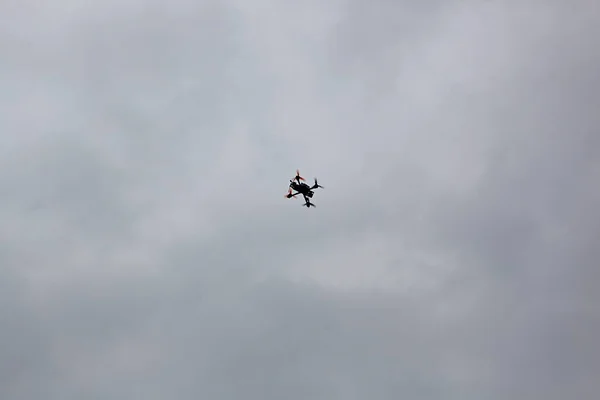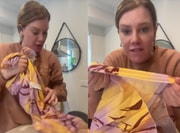
The next time you hear a faint buzzing overhead, it might not be just another neighbour testing their new gadget. Increasingly, those eyes in the sky belong to your insurance company, and they're taking a very close look at your property—whether you know it or not.
What started as a technology to help assess bushfire damage has quietly evolved into a sophisticated surveillance network that's fundamentally changing how Australian properties are valued, insured, and even sold.
For homeowners over 60, many of whom have spent decades building equity in their homes, this shift represents both an opportunity and a challenge that demands attention.
When the future came to the Great Ocean Road
The story begins in 2016, when devastating bushfires tore through Victoria's Great Ocean Road area. IAG became the first Australian insurer to deploy drones for damage assessment, allowing them to inspect properties before authorities had even granted physical access and start processing customer claims immediately.
As IAG's Chief Operating Officer Andy Cornish explained at the time, 'The impact caused by the Victorian bushfires was incredibly stressful for the homeowners affected and using drone technology as part of our assessment process allowed us to make the experience safer, simpler and faster for our customers.'
The aerial imagery also provided a safe way for both assessors and customers to review damage, removing risks associated with physical site visits such as asbestos exposure, fallen power lines, and land slips. What seemed like an innovative emergency response has since become standard practice across the industry.
'Using drone technology as part of our assessment process allowed us to make the experience safer, simpler and faster for our customers'
The technology takes flight across Australia
Fast-forward to 2025, and drone surveillance has become far more sophisticated and widespread. Technical Assessing now operates Skytech TA, Australia's first and only in-house drone division operated by a loss adjuster, which is 'transforming the insurance industry through an innovative way of assessing claims.'
QBE, one of Australia's largest insurers, has been underwriting drone operations for over 10 years, while companies like Measure Australia create detailed 3D models of properties for insurance purposes.
These drones offer significant time and cost savings compared to traditional assessment methods, allowing insurers to streamline the claims process and deliver faster outcomes. By covering large areas in a fraction of the time, drones enable insurers to expedite claims assessments and make timely decisions.
What this means for your hip pocket
The implications extend far beyond faster claims processing. If your property is deemed too risky to insure based on aerial imagery, or if insurance premiums become prohibitively expensive, your home's market value can plummet.
This is particularly concerning for properties in bushfire-prone zones or flood-prone areas—locations where many Australians have built their retirement homes for the lifestyle benefits.
The technology creates a two-tiered property market where some homes become less attractive or even unsaleable due to insurance challenges. For older Australians who may be asset-rich but income-poor, this could significantly impact retirement planning and estate value.
Your privacy rights under Australian law
While several laws cover drone use in Australia, if you've been photographed or filmed by a drone and the operator is an organisation covered by the Privacy Act, they must comply with Australian Privacy Principles (APPs). However, there's currently no requirement for insurers to notify you before taking aerial photographs of your property or to provide you with copies of these images.
The maintenance imperative
Drones provide insurers with advanced imaging and remote operation capabilities, offering a comprehensive view that allows for more informed decision-making and faster claims resolution.
This means seemingly minor maintenance issues—a few loose roof tiles, overgrown vegetation near your dwelling, or a small section of damaged guttering—can now be easily identified and flagged.
For homeowners, particularly those on fixed incomes, this places greater emphasis on proactive property maintenance. What might have gone unnoticed during a traditional drive-by assessment is now captured in high-resolution detail from above.
Essential maintenance checklist for drone-surveilled properties
- Inspect roof tiles and guttering quarterly, especially after storms
- Keep vegetation trimmed back from the house structure
- Maintain clear access paths around your property
- Address any visible damage promptly, no matter how minor
- Document maintenance and repairs with photos and receipts
- Consider annual professional roof inspections for peace of mind
The cost of coverage
Drone insurance costs in Australia range from $150-$300 annually for recreational use to $500-$2,000 for commercial operations, depending on factors like the type of drone, its use, the insured value, and claims history.
This investment in surveillance technology by insurers suggests they're finding significant value in the data collected—value that's ultimately reflected in your premiums and coverage decisions.
Example Scenario
-
Margaret's maintenance wake-up call - Margaret, 68, from the Blue Mountains, received a notification that her home insurance premium was increasing by 40 per cent. When she contacted her insurer, she learned that aerial imagery had identified several loose roof tiles and overgrown trees close to her house.[/p]
While a traditional inspection might have missed these issues, the drone's high-resolution cameras captured them clearly. After investing $2,200 in roof repairs and tree trimming, Margaret's premium increase was reduced to just 8 per cent.
Taking back some control
While you can't stop insurers from using drones, you're not powerless. Start by conducting your own 'aerial assessment' - climb a ladder (safely) or hire a professional to inspect what drones might see from above. Look for loose tiles, damaged guttering, overhanging branches, or any structural issues that might raise red flags.
Document your property's good condition with photographs and maintain records of all maintenance and improvements. If you receive a policy adjustment or renewal based on aerial imagery, don't hesitate to challenge assessments you believe are inaccurate or outdated.
Consider joining your local Neighbourhood Watch or community group to share information about insurer practices in your area. Knowledge is power, and staying informed about how different insurers operate can help you make better decisions about coverage.
The regulatory landscape
Unlike some overseas jurisdictions that are considering mandatory notification requirements, Australia currently lacks specific consumer protections around insurance-related drone surveillance. While privacy laws apply when organisations use drones to photograph individuals, the specific application to property insurance assessment remains a grey area.
This regulatory gap means Australian homeowners have fewer protections than their international counterparts when it comes to aerial surveillance by insurers. Advocacy groups are calling for clearer guidelines, but change may be slow in coming.
Looking ahead
The insurance environment is in constant flux, demanding forward-looking companies willing to identify the next big innovation. UAV technology is reshaping how insurers serve customers, and this transformation is only accelerating.
Artificial intelligence integration with drone imagery is the next frontier, potentially enabling real-time risk assessment and even predictive maintenance recommendations. While this could benefit homeowners through earlier problem identification, it also raises questions about privacy and the increasing commoditisation of our most personal spaces.
For Australian seniors, many of whom remember when an insurance assessment meant a friendly agent stopping by for a cup of tea and a chat, this technological revolution represents a fundamental shift in the relationship between homeowner and insurer.
Did you know?
Did you know? Technical Assessing's Skytech TA division can now create detailed 3D models of properties and complete comprehensive assessments in a fraction of the time it would take traditional methods. This technology is being rolled out across major Australian insurers, making aerial surveillance the new normal for property assessment.
What This Means For You
The eyes in the sky are here to stay, quietly reshaping the Australian property landscape one aerial photograph at a time. For homeowners, the challenge isn't to resist this change, but to understand it, prepare for it, and ensure their properties—and their interests—are protected in this brave new world of surveillance from above.
The conversation about consumer rights, privacy protections, and fair access to insurance is just beginning. Your voice in this discussion matters—whether it's through industry feedback, community advocacy, or simply staying informed about your rights as a property owner.
What's your experience with insurance assessments? Have you noticed changes in how your insurer evaluates your property, or do you have concerns about privacy and drone surveillance? Share your thoughts and help fellow homeowners navigate these changing times.
Original Article
https://www.realestate.com.au/news/...=newscomau&campaignPlacement=realestatemodule
Drones take flight to assess damage in Australian insurer first | IAG Limited
Cited text: For the first time in Australia, IAG has used drones to view damage caused by the devastating bushfires in the Great Ocean Road area, fast-tracking th...
Excerpt: The story begins in 2016, when devastating bushfires tore through Victoria's Great Ocean Road area.
https://www.iag.com.au/drones-take-flight-assess-damage-australian-insurer-first
Drones take flight to assess damage in Australian insurer first | IAG Limited
Cited text: “The impact caused by the Victorian bushfires was incredibly stressful for the homeowners affected and using drone technology as part of our assessmen...
Excerpt: The story begins in 2016, when devastating bushfires tore through Victoria's Great Ocean Road area.
https://www.iag.com.au/drones-take-flight-assess-damage-australian-insurer-first
Drones take flight to assess damage in Australian insurer first | IAG Limited
Cited text: Aerial imagery shot by the drones also allowed both assessors and customers to review damage from a safe location, removing the risks associated with ...
Excerpt: The aerial imagery also provided a safe way for both assessors and customers to review damage, removing risks associated with physical site visits such as asbestos exposure, fallen power lines, and land slips.
https://www.iag.com.au/drones-take-flight-assess-damage-australian-insurer-first
Behind The Scenes With Australia's Only In-House Drone In Insurance
Cited text: Skytech TA is the first and the only in-house drone division operated by a loss adjuster in Australia.
Excerpt: Technical Assessing now operates Skytech TA, Australia's first and only in-house drone division operated by a loss adjuster, which is 'transforming the insurance industry through an innovative way of assessing claims.'
https://technical.net.au/australias-only-in-house-drone-in-insurance/
Behind The Scenes With Australia's Only In-House Drone In Insurance
Cited text: Skytech TA is transforming the insurance industry through an innovative way of assessing claims, which will be a trend in the future.
Excerpt: Technical Assessing now operates Skytech TA, Australia's first and only in-house drone division operated by a loss adjuster, which is 'transforming the insurance industry through an innovative way of assessing claims.'
https://technical.net.au/australias-only-in-house-drone-in-insurance/
RPAs cover | QBE AU
Cited text: We have been underwriting aviation in Australia for over 55 years and RPAs/UAVs /drones for over 10 years.
Excerpt: QBE, one of Australia's largest insurers, has been underwriting drone operations for over 10 years
https://www.qbe.com/au/business-insurance/aviation/rpas-cover
Behind The Scenes With Australia's Only In-House Drone In Insurance
Cited text: Furthermore, drones offer significant time and cost savings compared to traditional assessment methods, allowing insurers to streamline the claims pro...
Excerpt: These drones offer significant time and cost savings compared to traditional assessment methods, allowing insurers to streamline the claims process and deliver faster outcomes.
https://technical.net.au/australias-only-in-house-drone-in-insurance/
Drones | OAIC
Cited text: A few laws cover drone use in Australia. If you’ve been photographed or filmed by a drone and the operator is an organisation or agency the Privacy Ac...
Excerpt: While several laws cover drone use in Australia, if you've been photographed or filmed by a drone and the operator is an organisation covered by the Privacy Act, they must comply with Australian Privacy Principles (APPs).
https://www.oaic.gov.au/privacy/your-privacy-rights/surveillance-and-monitoring/drones
Behind The Scenes With Australia's Only In-House Drone In Insurance
Cited text: Drones have emerged as a game-changer in claims assessment, offering a unique blend of accuracy, accountability, and accessibility that traditional as...
Excerpt: Drones provide insurers with advanced imaging and remote operation capabilities, offering a comprehensive view that allows for more informed decision-making and faster claims resolution.
https://technical.net.au/australias-only-in-house-drone-in-insurance/
Drone Insurance in Australia: Cost, Coverage, and Providers
Cited text: Here’s a general guide to drone insurance Australia cost: Recreational insurance: from $150—$300 AUD per year · FPV drone insurance: from $250—$500 AU...
Excerpt: Drone insurance costs in Australia range from $150-$300 annually for recreational use to $500-$2,000 for commercial operations, depending on factors like the type of drone, its use, the insured value, and claims history.
https://www.flyingglass.com.au/drone-insurance-coverage-australia/
Drone Insurance in Australia: Cost, Coverage, and Providers
Cited text: The question how much does it cost to insure a drone is common, and the answer varies. Factors like your drone model, value, experience, and intended ...
Excerpt: Drone insurance costs in Australia range from $150-$300 annually for recreational use to $500-$2,000 for commercial operations, depending on factors like the type of drone, its use, the insured value, and claims history.
https://www.flyingglass.com.au/drone-insurance-coverage-australia/
Behind The Scenes With Australia's Only In-House Drone In Insurance
Cited text: The insurance environment is in a constant state of flux, and this demands forward-looking companies that are willing and able to identify the next bi...
Excerpt: The insurance environment is in constant flux, demanding forward-looking companies willing to identify the next big innovation.
https://technical.net.au/australias-only-in-house-drone-in-insurance/
Behind The Scenes With Australia's Only In-House Drone In Insurance
Cited text: This team uses the cutting-edge technology of UAVs (Unmanned Aerial Vehicles) or drones to reshape how we serve our customers.
Excerpt: The insurance environment is in constant flux, demanding forward-looking companies willing to identify the next big innovation.
https://technical.net.au/australias-only-in-house-drone-in-insurance/







